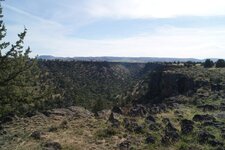- Messages
- 258
- Reactions
- 10
I was just watching another video on dressing/butchering game animals today and now I have more questions. I have watched about 5 different videos on field dressing large game so far and none were exactly the same. It seems there are a ton of different methods out there, so I am trying my best to pick and choose what seems like it would be most effective for me. In the video I watched today they suggested transporting the animal almost whole once it has been gutted, then skinning it, cleaning it up and letting the animal age for 3 days per 100 pounds of weight. A couple other videos I watched though said to get the skin off and quarter the animal ASAP to allow the meat to cool faster. I know that aging meat is supposed to be great for the tenderness/flavor if done properly; but really how many people have the facilities to properly age a whole animal? (keeping it between 32-42 degrees F)
Is it really worth it for deer, elk, or moose to haul out an intact animal to let it age whole rather than quartering, or boning it out where it falls?
How much worse would meat be if it was boned out at the site of the harvest rather than being aged?
Does anyone here age your meat? If so how do you do it?
Would a butcher shop let you pay to age a carcass in their refrigerator? If so how much would they charge?
Is it really worth it for deer, elk, or moose to haul out an intact animal to let it age whole rather than quartering, or boning it out where it falls?
How much worse would meat be if it was boned out at the site of the harvest rather than being aged?
Does anyone here age your meat? If so how do you do it?
Would a butcher shop let you pay to age a carcass in their refrigerator? If so how much would they charge?













